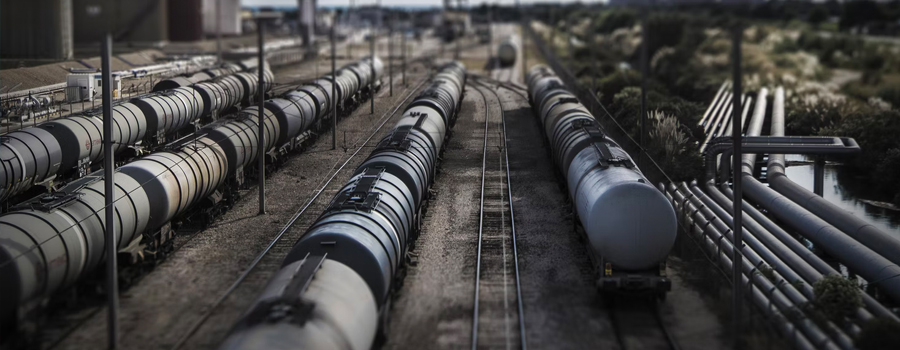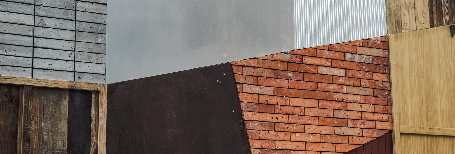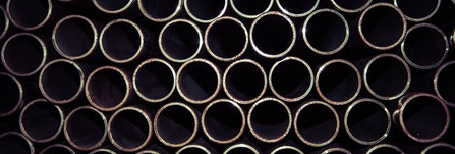
the pressure vessel is a type of sealed container capable of withstanding pressure. it has extensive applications across various industries, including industrial, civilian, military, and scientific research sectors. it holds a significant position and plays a crucial role in many fields. among these, it is most commonly used in the chemical and petrochemical industries, where pressure vessels make up about 50% of the total number of such vessels employed solely in the petroleum chemical industry.
in chemical and petrochemical fields, pressure vessels are primarily used for processes like heat transfer, mass transfer, reactions, storage, and transportation of pressurized gases or liquefied gases. they also find widespread applications in other industrial and civilian sectors, such as air compressors. various specialized compressors and auxiliary machines for refrigeration (coolers, buffers, oil-water separators, gas storage tanks, evaporators, liquid coolant storage tanks, etc.) are all categorized as pressure vessels.
pressure vessels are comprehensive products that involve multiple industries and disciplines. their construction techniques encompass metallurgy, machining, corrosion prevention, non-destructive testing, safety measures, and more. these vessels are widely utilized in sectors like chemical engineering, petroleum, machinery, power generation, metallurgy, nuclear energy, aerospace, marine, and others. they are indispensable core equipment in production processes and serve as a significant indicator of a country's equipment manufacturing level. pressure vessels include components such as reaction vessels, heat exchangers, shell-and-tube heat exchangers, gas-liquid storage tanks, pressure shells in nuclear reactors, steam drums in power plant boiler systems, and more.
with advancements in metallurgy, machining, welding, non-destructive testing, and related technologies, pressure vessel manufacturing has seen continuous progress.
to ensure that pressure vessels meet objectives such as advanced design, reasonable structure, ease of manufacturing, reliable use, and cost-effectiveness while prioritizing safety, countries worldwide have formulated specific standards, regulations, and technical conditions based on their individual circumstances. these guidelines outline specific and mandatory provisions for the design, manufacturing, inspection, and use of pressure vessels.

noa has established the following technical consulting and training courses for the export of pressure equipment, regulations, specifications, and standards. these courses can be conducted at designated customer locations or through public sessions.
1. introduction to export requirements for pressure equipment
2. asme standard section viii - pressure vessels
3. non-destructive testing techniques as per asme and ped requirements
4. pressure equipment directive ped 97/23/ec
5. fundamentals of welding and aws d1.1
6. fundamentals of welding and asme standard section ix
7. fundamentals of welding and european welding standards
8. electrical safety training
9. operation and maintenance of fire protection systems
1. customer presents specific requirements
2. specialist personnel engage and assess
3. professional testing proposals are generated
4. technical proposals are clarified or queries addressed
5. quotation is provided
6. technical service contract is signed
7. project execution phase
8. project conclusion and summary
what are the relevant standards of the pressure equipment directive (ped)?
en 13445 - fire pressure vessels is a standard which consists of 8 parts:
(1) en 13445-1: unburned pressure vessels - part 1: general
(2) en 13445-2: unburned pressure vessels - part 2: materials
(3) en 13445-3: unburned pressure vessels - part 3: design
(4) en 13445-4: unburned pressure vessels - part 4: manufacture
(5) en 13445-5: unburned pressure vessels - part 5: inspection and testing
(6) en 13445-6: unburned pressure vessels - part 6: design & manufacturing requirements for pressure vessels & pressure components made of ductile iron
(7) en 13445-8: unburned pressure vessels - part 8: additional requirements for aluminium and aluminium alloy pressure vessels
(8) en 13445-10:2015: unburned pressure vessels - part 10: additional requirements for nickel and nickel alloy pressure vessels
how many pressure ratings are pressure vessels divided into?
(1) low pressure (code l) 0.1mpa≤p<1.6mpa
(2) medium pressure (code m) 1.6mpa≤p<10.0mpa
(3) high pressure (code h)) 10.0mpa≤p<100.0mpa
(4) ultra-high pressure (code u) p≥100.0mpa
according to the principle of action in the production process, pressure vessels are divided into several types?
(1) reaction pressure vessel (code r): mainly used to complete the physical and chemical reaction of the medium, such as reactor, reaction kettle, decomposition pot, vulcanization tank, decomposition tower, polymerization kettle, autoclave, ultra-high pressure kettle, synthesis tower, shift furnace, cooking pot, steam ball, autoclave, gas generator, etc.
(2) heat exchange pressure vessel (code e): mainly used to complete the heat exchange of the medium, such as shell-and-tube waste heat boiler, heat exchanger, cooler, condenser, heater, sterilizer, dyer , drying cylinder, steam frying pan, preheating pot, solvent preheater, steamer, steam off-line, electric steam generator, gas generator water jacket, etc.
(3) separation pressure vessel (code s): it is mainly used to complete the fluid pressure balance buffer of the medium and the pressure vessel for gas purification and separation, such as separators, filters, oil collectors, buffers, scrubbers, absorption towers, copper washing tower, drying tower, stripping tower, sub-cylinder, deaerator, etc.
(5) storage pressure vessel (code c, in which spherical tank code b): mainly used to store and contain gas, liquid, liquefied gas and other media, such as various types of storage tanks.
what are the inspections of pressure vessel products?
(1) external inspection, also known as in-service inspection, the main contents of inspection are: whether there are abnormal phenomena such as cracks, deformation, leakage, local overheating, etc. on the outer surface of the pressure vessel; whether the safety accessories are complete, sensitive and reliable; whether the fastening bolts are in good condition and all screwed up; whether the foundation has any abnormal phenomena such as subsidence, inclination and damage to the anti-corrosion layer. external inspection is not only the work of the inspector, but also the daily patrol inspection item of the operator. if a safety-threatening phenomenon is found (such as cracks, deformation, serious leakage of pressure components, etc.), the operation should be stopped and the relevant personnel should be reported in time.
(2) internal and external inspection of the pressure vessel : this inspection must be carried out after the vehicle has been shut down and the inside of the vessel has been cleaned. the main contents of the inspection not only include all the contents of the external inspection, but also inspect the corrosion and wear of the inner and outer surfaces; use the naked eye and a magnifying glass to inspect all welds, head transition areas and other stress concentration parts for cracks, and ultrasonic waves are used if necessary. after that, it is necessary to do radiographic inspection to check the internal quality of the weld, and measure the wall thickness. if the measured wall thickness is less than the minimum wall thickness of the container, the strength check should be carried out again, and measures for pressure reduction or repair should be proposed; for containers that may cause changes in the metallographic structure of metal materials, metallographic inspection should be carried out if necessary; the main bolts of ultra-high pressure vessels should be inspected for cracks by using magnetic powder or coloring. through internal and external inspections, the reasons for the defects detected should be analyzed and suggestions for handling are proposed. inspectors should recheck after repair. the inspection period for the inside and outside of the pressure vessel is once every three years, but the inspection period for the container with strong corrosive medium and highly toxic medium should be shortened. the inspection period should also be shortened for the containers with serious defects found during operation, the containers with poor welding quality and unknown anti-corrosion ability of the material to the medium.
(3) comprehensive inspection. in addition to the above-mentioned inspection items, the comprehensive inspection of the pressure vessel should also carry out a pressure test (generally a hydraulic test). inspectors should carry out non-destructive inspection spot check or all weld seam inspections on main welds. however, for containers with very low pressure, non-flammable or non-toxic, non-corrosive medium, if no defects are found, non-destructive inspection may not be performed after obtaining certain experience. the comprehensive inspection cycle of the container is generally carried out at least once every six years. for qualified containers that contain air and inert gas, the comprehensive inspection period may be appropriately extended after the use experience, and 1~2 internal and external inspections are obtained to confirm that there is no corrosion.






tel: 86-400 821 5138
fax: 86-21 3327 5843
email:noa@noagroup.com